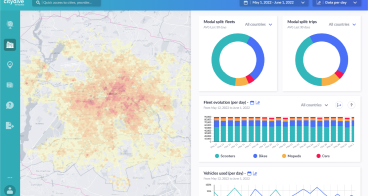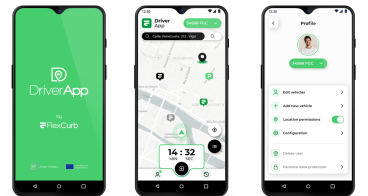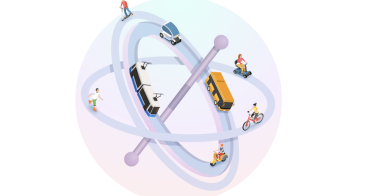Using data for sustainable urban mobility | Keynote by Alanus von Radecki
Urban data can be put into valuable applications in cities & regions to realise the full sustainable potential of urban mobility. What are concrete possibilities, what kind of technological infrastructure do cities need – and what role does open-source play in this?
Mobility is a field where various data-based use cases can be implemented with applications ranging from traffic space analysis and planning with (real-time) 3D modelling to infrastructure monitoring or steering traffic offers. For cities like Barcelona or Oslo, the use of data has contributed to reduction of individual traffic by 19%, an increase in income with parking apps by 50 million euro per year and increased use of public traffic by 44%.
Data as basis for different applications
Data-based solutions help to make our cities more liveable, sustainable and resilient. Three main application areas can be distinguished for the beneficial use of data:
- Monitoring. To achieve municipal goals, urban processes need to be monitored: from street lighting to charging infrastructure to wastewater systems. Digital dashboards and analysis tools use data to specifically measure and easily visualise the status quo or progress in the city's important systems. Unusual events or upcoming issues may thus be detected automatically, and proactive measures can be taken.
- Networked control. Whether networked mobility, flood warnings or CO2-neutral neighbourhoods - the basis of future solutions is the automated processing of real-time data. Urban data platforms link a multitude of urban data sources and enable sovereign control of systems in real time and based on forecasts.
- Evidence-based planning. Where demands are increasingly intertwined, tangible evidence is needed to make holistic decisions for the long term. Data allows for more sustainable planning of infrastructure and public space. Digital urban twins enable joint modelling and simulation for all actors involved.
Data-based Mobility Applications: For Cities & Regions of the Future
For implementations, urban data platforms allow data to be integrated, linked, and applied as needed to address challenges in urban design, planning and management. Third-party data-based solutions from the Smart City market can be linked.
Data platforms are already in use, but in many cases, proprietary technology prevents comprehensive data sharing beyond the limits of a single municipality and thus many possible use case implementations.
A replicable use case example comes from the City of Freiburg: Connecting past and real-time camera data, floating car data, data from radar systems and induction loops, traffic flows were visualised in a 3D model. With the visualisation, traffic situations can be reconstructed and monitored and challenges in traffic control be identified. This enables an evidence-based, people-friendly development of traffic. The code of the solution can be found on Github.
Data-Based Infrastructure: Better open source for better mobility
The use of open-source technology provides the public sector with important benefits: Open-source meaning that code is made available publicly for (further) development under certain licenses. There are several factors that make the right open-source solution the obvious choice for any local authority:
- Security. Open-source software in general is very secure, since many developers work on the (source) code and vulnerabilities are quickly identified by a community through the public availability of the code. This, however, requires an active community of contributors.
- Vendor independence on solution level. Market monopolies and a lack of compatibility of standards make it difficult to change products and providers for municipalities. If a proprietary application is used, this usually entails legal restrictions, often associated with high costs. The more open-source architectures are used, the greater the degree of self-determination for the municipal actors. This is particularly important in the public sector, which wants to build on democratic and market-independent principles and dynamics.
- Replicability of code and use cases. The use of open-source technology and open standards makes it easier for solutions to be adopted by other municipalities or even developed jointly. In contrast, a lack of common technological foundations and interfaces is a major obstacle to the scaling of smart city applications. Isolated implementations, no matter how ingenious, are only of limited help when it comes to reducing emissions, conserving resources, and improving the quality of life of citizens in the long term.
- Joint implementation. Collaborating on use cases for several cities at the same time can save money in individual budgets – because shared development costs are half the cost in many places.
This way, open-source technology provides a basis for the public sector to use data for sustainable, needs-oriented urban mobility. Much of the data already exists – but often still lies in silos of administration, private sector, or research institutions. Open urban data platforms based on open standards as provided by the Data-Competence Center for Cities and Regions make it possible to break those silos and allow open mobility applications as described above.
Want to learn more? Access the shared files section below to download the DKSR Brochure on Open Source Data Platforms for Sustainable Cities & Regions.
The author: Dr. Alanus von Radecki is head of the Data Competence Center Cities and Regions DKSR. He has been working for the implementation of sustainable innovations in cities and communities for more than 12 years and has already advised cities such as Stockholm, Manchester, Prague, and Munich. Previously, he has led the Fraunhofer Morgenstadt Innovation Initiative among others.
Published on 18 April 2023.






